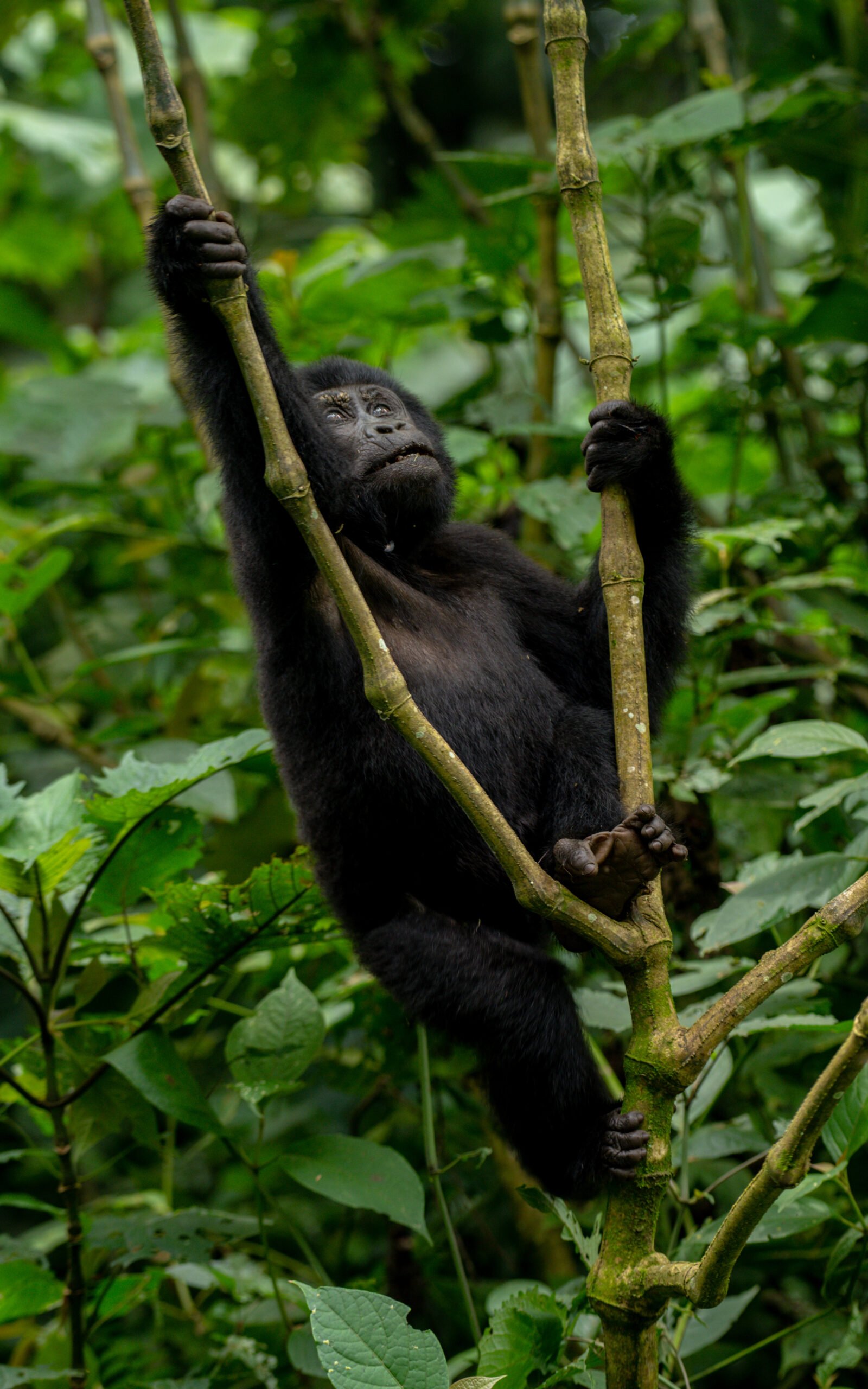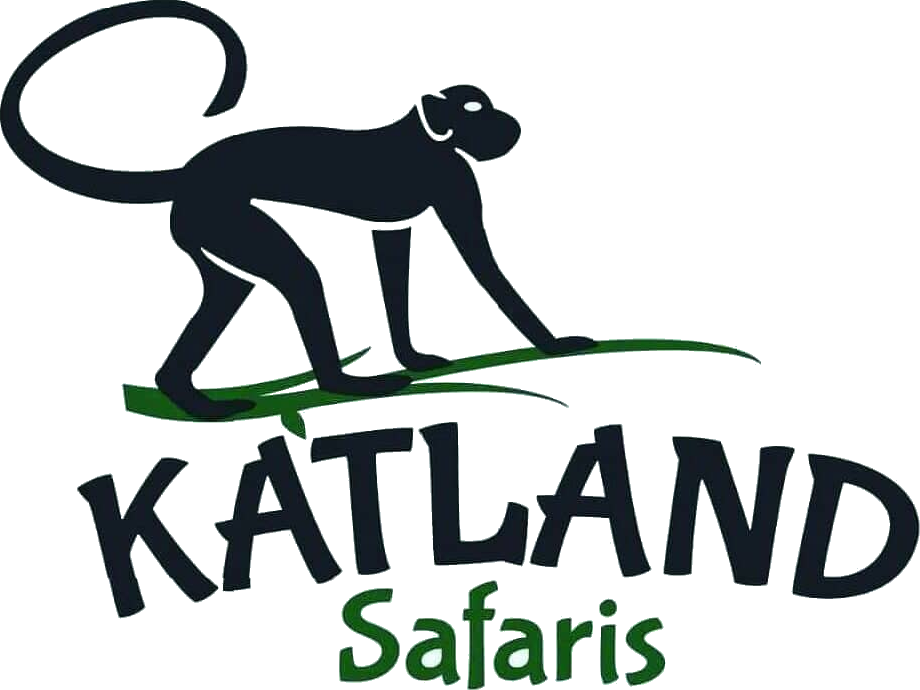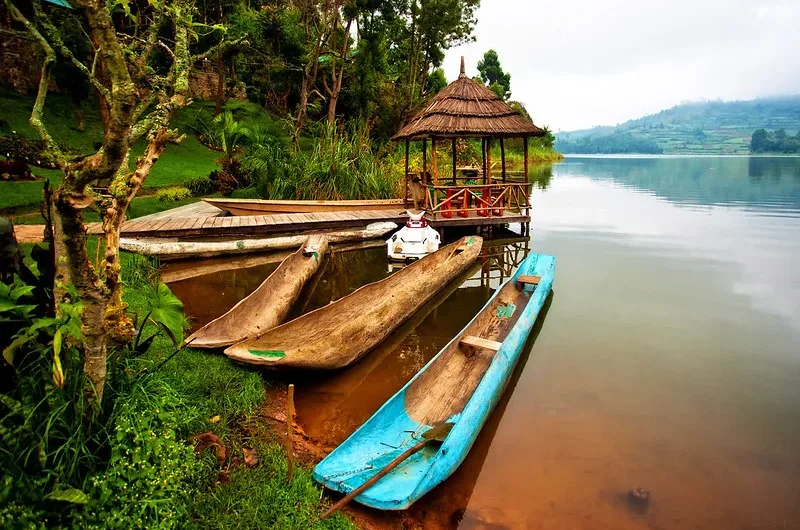Visiting Bwindi or Mgahinga for gorilla trekking from Lake Bunyonyi or Kabale.
Gorilla trekking from Lake Bunyonyi.
Although it takes one to one and a half hours to reach Bwindi Impenetrable National Park from Lake Bunyonyi or Kabale, you can expect to go along twisting roads. During the heavy wet seasons, the road is dusty at times and slippery at others. About 59 kilometers separates the Ruhija region of Lake Bunyonyi or Kabale from Bwindi Impenetrable National Park.
From Lake Bunyonyi or Kabale, which is about 95 kilometers, or a three to four-hour trip, I am connecting to Buhoma. Unfortunately, this place is rather hilly with a wrong road; hence, you require a 4×4 wheel drive car with volcanic soils that are slippery at times, particularly during the heavy wet seasons.
From Kabale or Lake Bunyonyi, gorilla trekking to the Ruhijah or Buhoma section of Bwindi Impenetrable National Park is faster. The Bitukura family, Oruzogo family, Kyaguriro family, and Makisa family make up the Ruhijah area. The Rushegura family, the Mubare family, Habinyanja family make up the Buhoma area. To save traveling so early to catch up with a briefing elsewhere, you also have to secure lodging in or near this region.
About 94 kilometers separate Mgahinga National Park from Kabale, or Lake Bunyonyi, more precisely, Ntebeko Center. From Kabale to Kisoro, the drive is around 80 kilometers. Later, you drive fourteen kilometers to Ntebeko. A sequence of mountains you avoid is causing the route to meander here.
Currently available for visitors, Mgahinga National Park has one gorilla family known as the Nyakagezi family. This gorilla family used to wander into Rwanda in the past; their gorilla permits would be reserved upon availability.
With amazing views of over 29 Islands, including Punishment Island, where girls who were victims of early pregnancy were put to starve in the past, Lake Bunyonyi is the deepest lake in Uganda. Bunyonyi is a local term for little birds; this lake supports several of these species.
Book Gorilla Permits For Mgahinga National Park Or Bwindi Impenetrable National Park
Traveling from Lake Bunyonyi or Kabale would be better if booking the gorilla permits for the northern section of Bwindi Impenetrable National Park.
Know the day you want to go gorilla trekking and the number of people you want to bring.
Make sure you provide some information about where you could be leaving to go gorilla trekking when you submit your request. For instance, our safari consultant has to first consider gorilla licenses for the Northern Part of Bwindi, whether it is Kabale or Lake Bunyonyi. Although the southern portion of the Bwindi licenses may also be used, the northern sector permits take priority.
Mgahinga National Park permits solely refer to one gorilla family known as Nyakagezi. For this park, the sole maximum number of gorilla permits is thus 8.
Using the Uganda Wildlife Authority site, our safari adviser reviews the current status of the gorilla permits for your date.
If at all possible, we advise our customers to get their permissions right away. This is so because, while they are rare, demand for gorilla permits is quite strong globally, and they are sold quickly.
Later on, we ask for some of your details: your nationality, complete name as shown on your passport, date of birth, passport expiration date, and others.

When should I schedule a gorilla trekking permit for Bwindi Impenetrable National Park?
The wisest option is to get a gorilla permit for Bwindi Impenetrable National Park. Some, however, save their gorilla trekking permits six months to a year ahead.
Early booking of the gorilla permit lowers the possibility of panicking to look for one when they run out. Though on-ground permits are possible, particularly during the low seasons, it is not certain.
Booking the gorilla permit opens additional opportunities to pay for it in installments. At least when you buy a gorilla permit 90 days before the trip, Uganda Wildlife Authority lets you pay for it in installments, at least. You may be qualified to pay at least thirty percent of its expenses. Before prevent lose the 70% within the 90 days before the date of trekking, you have to top up.
How Much Does a Gorilla Trekking Safari Cost in Bwindi Impenetrable National Park?
The gorilla permit fees, $800 per person every trip, come first in cost before the gorilla trekking safari. Other elements to take into account when deciding the expenses of a gorilla trekking safari include
People on safari increases with increasing trip frequency; thus, the prices per person decrease. Joining a group gorilla trekking trip allows you to split expenses like driver guide fees, petrol, vehicle hiring, and others. You pay all gorilla safari package costs as a lone visitor.
Since the gorilla trekking safari falls during the peak season and lodging, car hiring, driver guide fees, and other expenses are quite expensive. The low season, at times, has lower rates applied to services meant to break even.
Since most service providers charge per day, the number of days on safari determines the safari cost; so, longer days on safari mean more safari expenses.
Extra activities besides gorilla walking. The safari cost increases with increasing activity mix, including gorilla trekking. Every action comes with expenses. Among the things you may relate to gorilla trekking are birdwatching, game drives, chimpanzee walking, and others.
Which lodging facility should one choose for Gorilla Trekking in Bwindi Impenetrable National Park? | Gorilla trekking from Lake Bunyonyi
Booking lodging near the location of your gorilla permit can help you more easily. Check the Bwindi locations where your permit is booked before booking the lodging prior to gorilla trekking. Among the Bwindi Impenetrable National Park sites are those of Buhoma, Ruhija, Rushaga, and Nkuringo.
There are many lodging options ranging from Luxury, Midrange, and Budget to others. Among these lodgings are Gorilla Forest Camp, Mahogany Springs, Silverback Lodge, Ruhija Safari Lodge, Broadbill Camp, Volcanoes Bwindi Lodge, Gorilla Resort, Lake Kitandara Tented Camp, and others.
How Long Is Trekking in Bwindi Impenetrable National Park? | Gorilla trekking from Lake Bunyonyi
Though the exact time to find the mountain gorillas is still unknown, depending on the dominant conditions in the forest, it sometimes takes two hours to three-quarters of the day.
As free natural creatures that wander the forest with nothing stopping them, mountain gorillas are mobile primates.
Every day, a group of ranger guides wakes up earlier than others to track the mountain gorillas and determine their possible daily habitat.
Among the elements influencing your search time to find the mountain gorillas might be:
Their feeding area’s closeness influences.
You may have to search for the gorilla family you are assigned from large distances, slowly. This is because mountain gorillas move when food runs out from a certain feeding spot. On the other hand, you may find them fast if they are at the beginning of the journey.
Should a conflict arise between two gorilla families, the family that loses might be compelled to leave their present habitat, therefore making it difficult to locate them at times.
A gorilla family could hide to grieve the death of one of its members.
Finding the mountain gorillas becomes difficult if the dominant silverback is adventurous, as the rest of the gorilla family may follow his methods.
Sometimes the paths are muddy and slick during the heavy rain seasons, which makes swift movement challenging. Hiking may be difficult even if mountain gorillas eat from the slopes, so postponing the gorilla journey.
How challenging is gorilla trekking?
Bwindi Impenetrable National Park’s rugged geography means that you should sometimes be prepared to climb. Expect to stroll over creepers; this pure woodland is also made of entangled flora that has endured over 30000 years.
Some fitness level helps you not have a muscular strain in the forest. To enable you to find the mountain gorillas, the ranger guide also moves with a machete, cutting through creepers.
Choosing which gorilla family is easiest to see is challenging because the one you may have spotted at the beginning point could be tough to find the following day.
Are Gorillas from the Mountains Dangerous?
Naturally quiet and timid creatures, mountain gorillas are. Though they are tranquil primates in nature, the dark-furred coat and profoundly sunken eyes give the body structure terrible features. Mountain gorillas have never harmed anybody involved in gorilla trekking in the past.
Everybody has to follow the guidelines of gorilla trekking and use the knowledge acquired in the briefing. Though every gorilla family has unique characteristics that may not be shared by others, mountain gorillas have overall norms.
Mountain gorillas may withdraw into hiding when they are enraged; they pound their chests, move with one foot, and pull grass about them. Remember, one hour is allotted in the company of the mountain gorillas; hence, you must optimize every minute to your best advantage.
What else should one do in Mgahinga National Park or Bwindi Impenetrable National Park Gorilla habitat?
This is seeing semi-habituated mountain gorillas in the forest adjusting to human presence. Still, these mountain gorillas exhibit untamed behavior, hence anticipate them to hide occasionally.
With two families available thus far, the southern portion of Bwindi Impenetrable National Park is the gorilla habitat site.
To be allowed to participate, you have to get a gorilla habituation permit. Four hours are allotted with the mountain gorillas if you find them. Four persons at most are permitted to accompany the ranger guides and habitations.
Birding Mgahinga Forest and Bwindi Forest
With more than 350 bird species—including Albertine endemics—Bwindi Impenetrable National Park is the Uganda birding paradise. Apart from that, Bwindi Impenetrable National Park has around 23 species of 24 identified Albertine rift endemics native to Uganda.
The main place for birding in this park is the Ruhowicz region; when you visit Mubwindi Swamp, you may see more than a hundred different species. Among the birds you might find are Western Green Tinkerbird, African Green Broadbill, Shelley’s Crimsonwing, African Hill Babbler, Collared Apalis, Montane Sooty Boubou, and more.
With around 115 bird species in Mgahinga forest, the count is still growing as few ornithologists have so far shown interest in this area.
Nature treks in National Park Bwindi Impenetrable.
Other primates include black and white colobus, red-tailed monkeys, grey-cheeked mangabey, olive baboons, and others may be seen when you go for leisure walks in the Bwindi forest; some of the guided hikes there include:
Both numerous primates and sharp birders have chances along the Munyanga River route below Buhoma.
On a clear day, you may see Lake Edward and Lake Gorge as well as the Western Rift Valley panorama from the Rushura Hill route.
The Nkuringo region is crossed by a historic road followed by the River Ivi Trail. For avid birders, it is really fantastic.
Local Group Walks
Run by the nearby community, Buhoma Community Walk transports guests into the lives of the indigenous people. Visit a farm, traditional healer, or banana brewery and, with the setup, take in a local music performance.
The Nkuringo community stroll lets you visit a blacksmith, a rural household, a local brewery, a traditional healer, and others.
Local Mutwa leads the Batwa Trail and Garama Cave in Mgahinga National Park. Benevolent in the plateau near Mgahinga National Park, the 342 km Garama cave is. After attacking the Bafumbira farms, the Batwa sought solace in the cave. Right now, it offers Batwa performances a dramatic backdrop.

